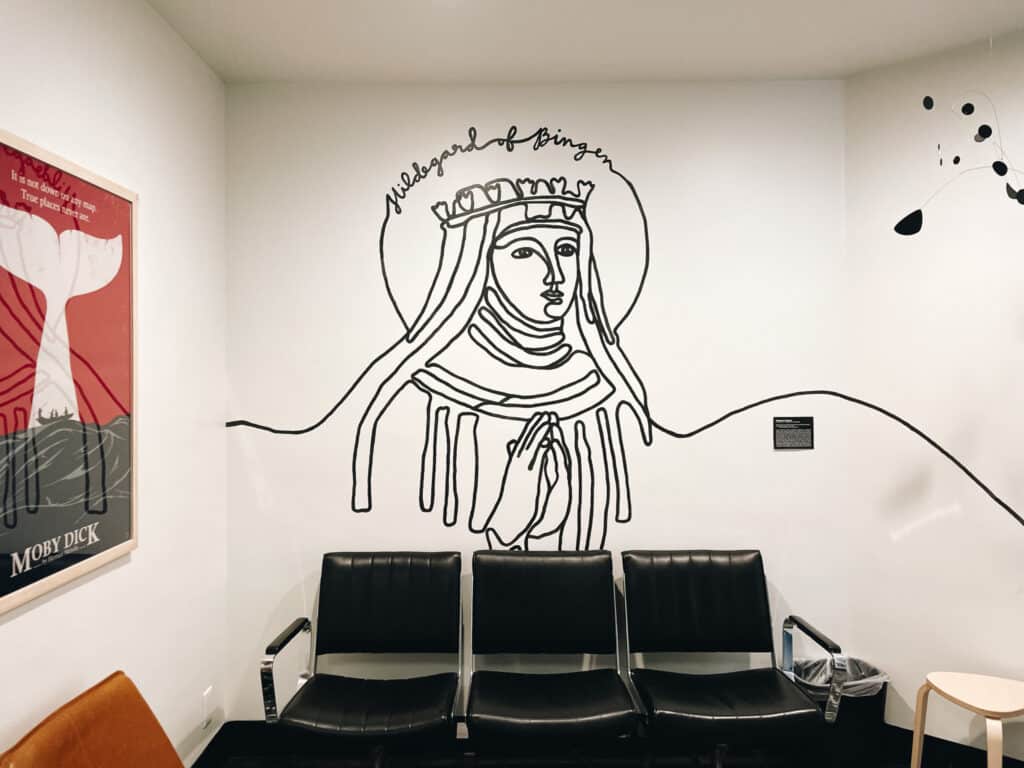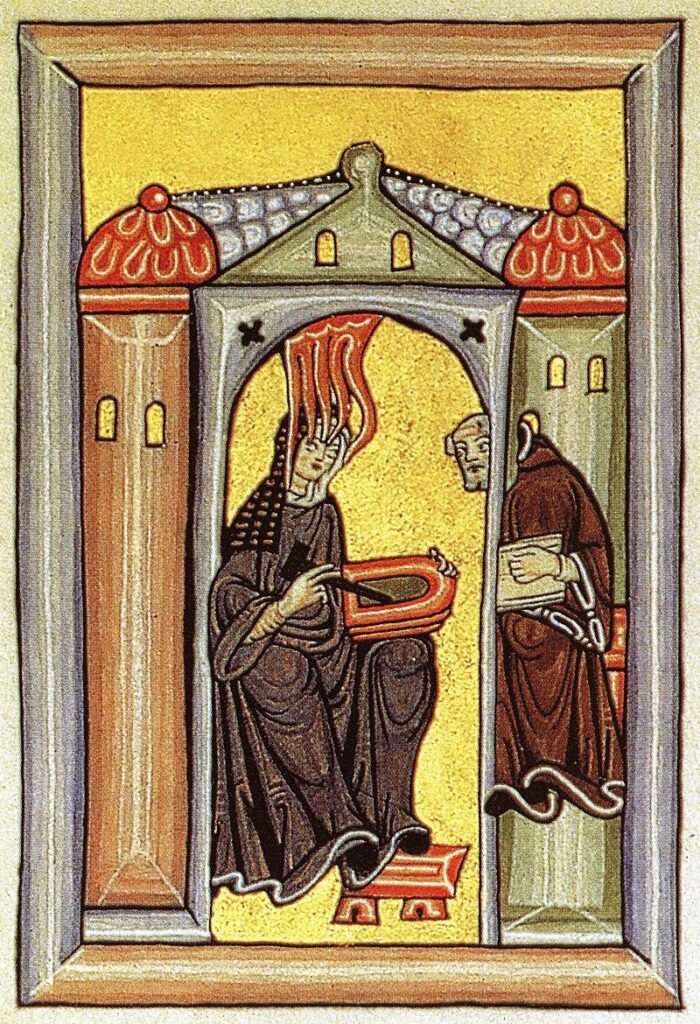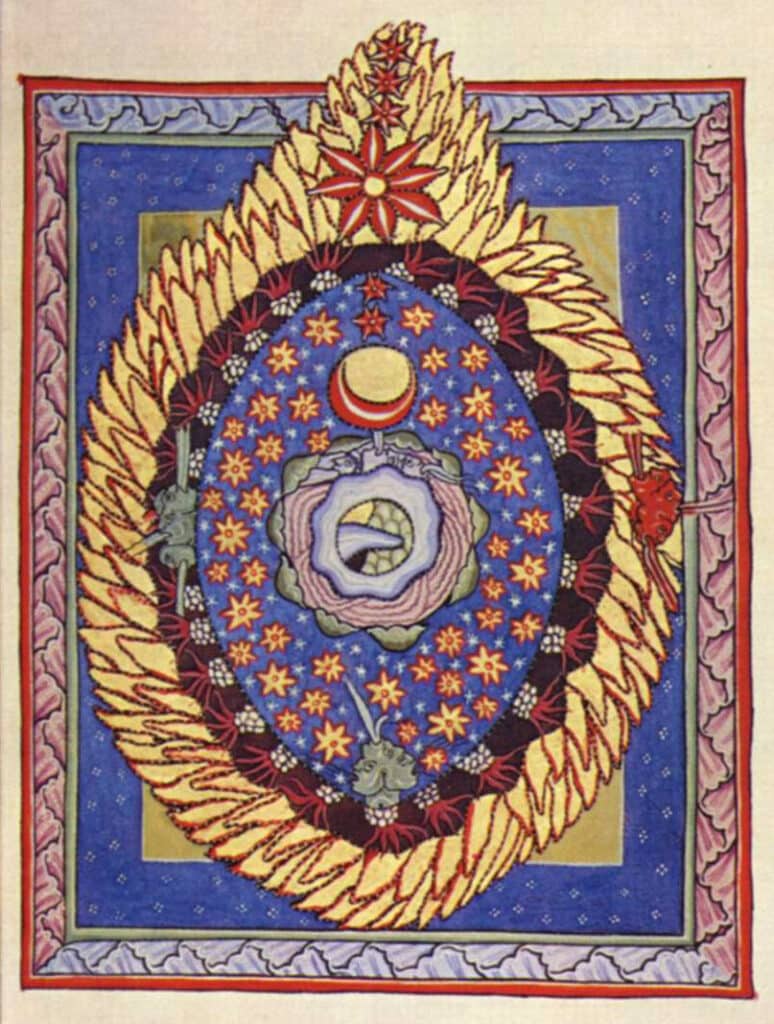Today’s edition of the Somebodies series is a special double feature! If you haven’t been to our new SLOCA High School location in Downtown SLO, you may not know that we have two influential people of the Middle Ages (among 8 other figures from other time periods) painted on the hallway walls. And if you weren’t able to attend our Art After Dark event a few weeks ago, you may not yet have had the chance to learn about these two amazing Medieval people. Don’t worry—you still have time to check out these two (and so much more!) at our High School Open House on May 2, but here’s a sneak peek into the lives and influence of HILDEGARD OF BINGEN and THOMAS AQUINAS.
You may already recognize HILDEGARD’s name from this year’s SLOCA Rewards Mug and the corresponding blog post about her, but we think she deserves a little more of a spotlight. Alive from c. 1098–1179, Hildegard was born in what is now Germany. A true renaissance woman, Hildegard of Bingen was a Medieval abbess, writer, composer, philosopher, and mystic. She is also said to be the founder of scientific natural history in Germany and wrote books on theology, botany, and medicine. Claiming to see visions from God, she had a strong voice in the church during a time when few women were permitted to speak up; she used her influence to fight institutional injustice, to give advice to various rulers and statesmen, and to provide a place of learning for other women in her community. She has recently gained popularity due to her holistic and natural approach to healing and to her commitment to spiritual as well as physical health. From Hildegard we can learn to pay better attention to the natural world around us, to be attuned even to the things we cannot see, and to cultivate a culture around us of justice and wonder.
A few more interesting facts about Hildegard:
- She had a correspondence with another one of our Somebodies and another fabulous woman of the Middle Ages, Eleanor of Aquitaine
- Hildegard was a sickly for most of her life yet made it to 81 years old. Some historians have theorized that she suffered from severe migraines, often becoming unable to walk, unable to see, or even paralyzed for days at a time
- She was one of the first known composers to exhibit a recognizable voice in her music. Hildegard music sounds like Hildegard. Read more about her musical talents and significance in this New Yorker article, published earlier this year
- Though informally honored by the Catholic church for centuries, Hildegard wasn’t proclaimed an official saint until 2012
Today’s quotation from Hildegard was chosen as complementary to the quote that adorns the SLOCA Rewards mug: “Glance at the sun. See the moon and the stars. Gaze at the beauty of the Earth’s greenings. Now, think.” Today’s quote also mentions stars, but as a way to illustrate how deep the invisible force of love is!
“Love abounds in all things, excels from the depths to beyond the stars.” – Hildegard of Bingen
Even when love seems scarce (when the kids are driving you crazy perhaps or when the world seems full of trouble), Hildegard reminds us that there is an abundance of love around us to tap into. What an inspiration to take with us into this week and beyond!
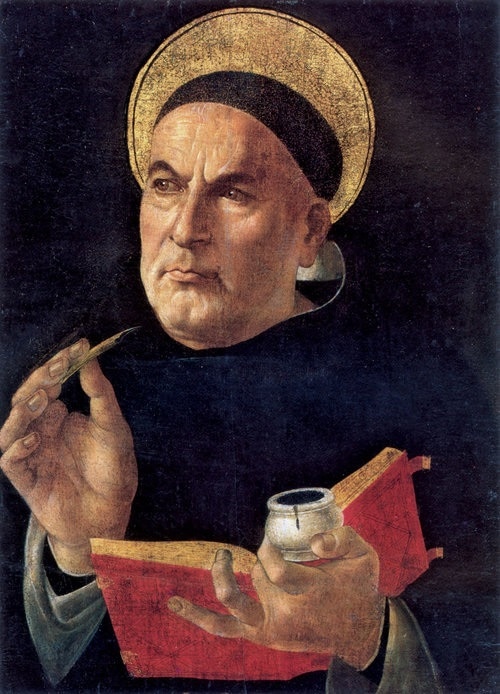
As for THOMAS AQUINAS, he was another interesting and influential person of the medieval church. Born less than fifty years after Hildegard died, he lived from 1225–1274 in present-day Italy. Whereas Hildegard has been more recently acknowledged as the independent and significant thinker she was, Thomas Aquinas’ influence has always been clear. He has been described as the most influential thinker of the medieval period and has also been named alongside Augustine of Hippo as one of the most influential theologians in Christian thought. Following in the footsteps of Socrates and Aristotle, he based his ideas on asking the right questions and reasoning out logical answers, even about vast and deep things like the cosmos and the nature of god. His influence on ethics, natural law, metaphysics, and politics is immense (in both spiritual and secular spheres), and he teaches us to pursue truth alongside goodness.
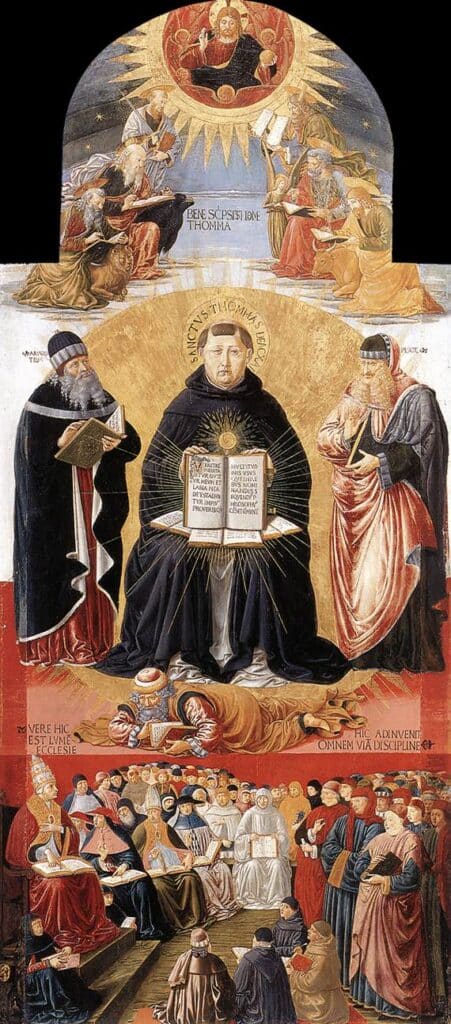
A few more interesting facts about Thomas Aquinas:
- It seems Thomas was always destined to be a monk; the question was about which monastic order he should join. His heart was set on the Dominican order, but his parents’ were set on the more traditional Benedictine order. They even imprisoned him for over a year to keep him from joining the Dominicans! When he wouldn’t budge, his family staged an escape from their imprisonment for Thomas to save face.
- Amongst his peers, Thomas Aquinas was called a “dumb ox,” not because he was unintelligent, but because he was extremely quiet.
- He is known as the patron saint of students.
- It is said that Thomas Aquinas’ handwriting was so bad it was called (in Latin) inintelligibilis, or unintelligible. But that didn’t matter much because he usually wrote by dictating to a scribe. Legend has it that he could dictate to two or three scribes at once since his brain moved faster than they could write.
- As Socrates’ school of thought is called Socratic, if you want to refer to one of Thomas Aquinas’ ideas by his first name—Thomist. What a flex!
Today’s quotation from Thomas is pulled from his work, Summa contra Gentiles. At SLOCA, we are committed to pursuing goodness, truth, and beauty wherever we go, in whatever we study. Thomas’ wisdom tells us that truth is the purpose of the universe! Which means that, like Hildegard tells us love is, truth must be all around us, waiting for us to notice it.
“Truth is the ultimate end of the whole universe.” —Thomas Aquinas
In the spirit of Thomas and Hildegard, let us pursue truth and love as we finish out this trimester oh so soon!


Don’t forget to check out our Instagram stories for our free smartphone wallpaper, or download below!







